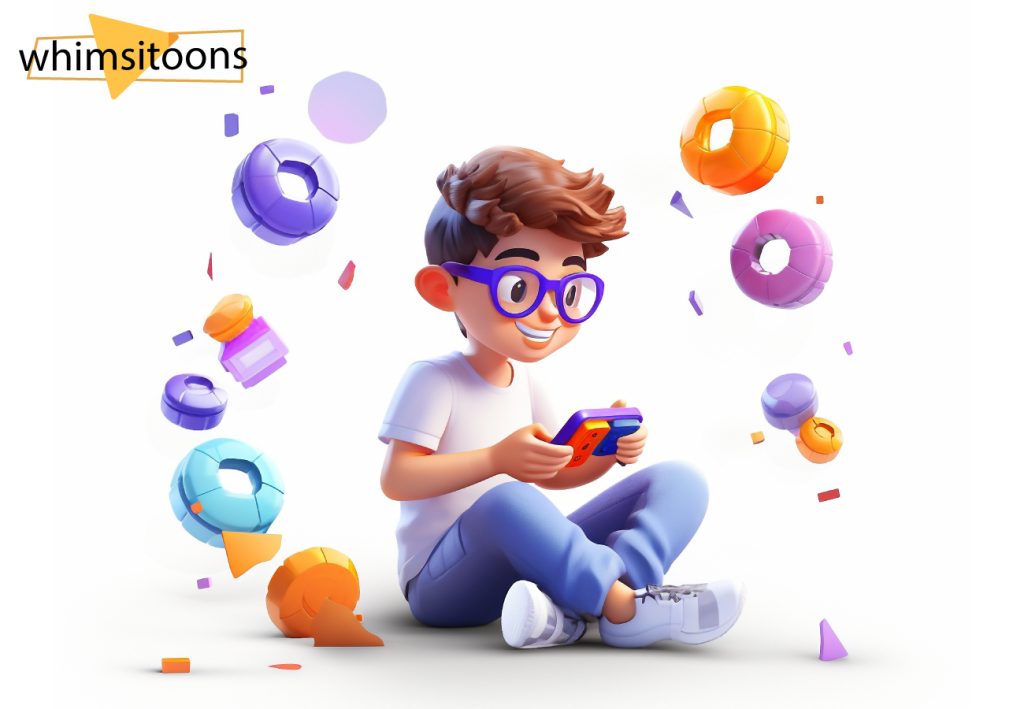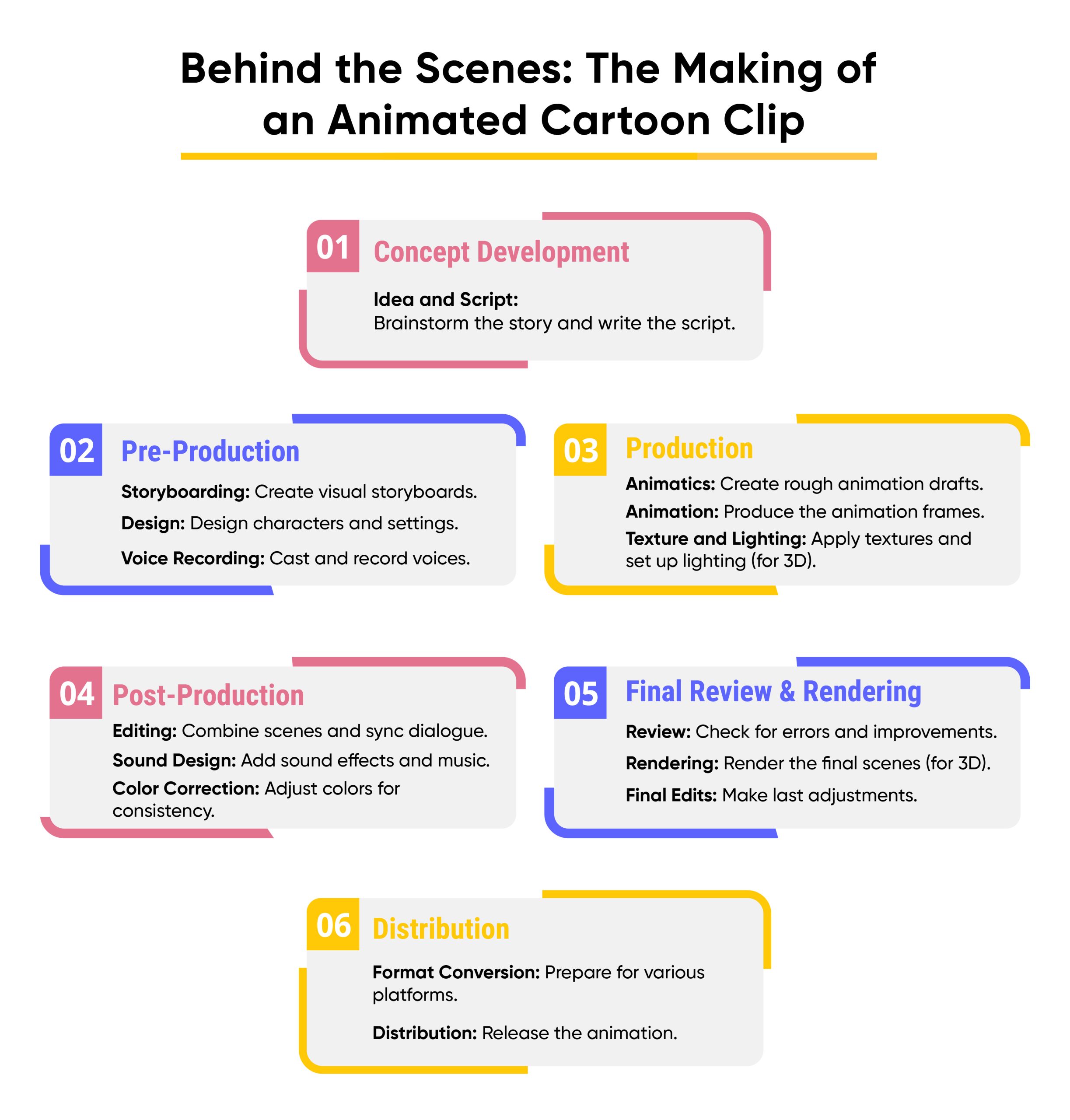The Magic of Animated Cartoon Clip: Creativity & Fun

Welcome to our colorful and creative world where the best animated cartoon clips are not just entertainment; they’re a blend of art, storytelling, and technology! In this blog post, we’ll dive into the fascinating world of animated cartoon, exploring everything from their history to their impact on popular culture and their incredible potential in various fields. So, grab your popcorn (and maybe a notepad) because we’re about to embark on an animated adventure!
The Evolution of Animation: From Classic to Contemporary
Let’s start with a bit of history. Animated cartoons have come a long way since their inception. Remember those Saturday morning cartoons? They were more than just a childhood memory; they were the stepping stones of the animation industry.
- The Early Days: It all began with simple hand-drawn images. Think of classics like ‘Mickey Mouse’ or ‘Tom and Jerry’. These cartoons were not just entertaining; they were revolutionary in their technique.
- The Technological Leap: With the advent of computers, animation took a massive leap. Digital tools brought about a new era of top animated cartoon clips, with intricate details and stunning visuals.
Why Animated Cartoons Captivate Us
Animated cartoon clip are more than just moving pictures. They are a unique form of storytelling that appeals to all ages. Why do they captivate us so much?
- Relatability: Whether it’s the struggle of Tom chasing Jerry or the adventures of superhero cartoons, there’s something inherently relatable in these stories.
- Escape from Reality: Animated cartoons provide a gateway to a world of imagination, far from the mundane realities of daily life.
- Aesthetic Appeal: The vibrant colors, exaggerated expressions, and fluid movements make these cartoons visually appealing.
The Making of an Animated Cartoon Video
Creating an animated cartoon short is no small feat. It’s a blend of creativity, technical skill, and storytelling prowess, crucial elements that also make these animations powerful in the realm of marketing. An easier way to look at it is this:
- Conceptualization: It all starts with an idea. What story do you want to tell?
- Scriptwriting: Every great animation begins with a script. It’s the blueprint of your story.
- Storyboarding: This is where the script gets a visual form. Think of it as a comic strip version of your script.
- Designing and Animating: Characters and environments are designed, and then brought to life through 2D and 3D animation.
- Voice-over and Music: No animated clip is complete without the voices and music that bring emotional depth to the story.

Bridging Creativity and Marketing with Animated Cartoons
The meticulous process of creating animated cartoons not only results in captivating entertainment but also forms the basis of their effectiveness in marketing. These animated creations are powerful tools for brands, offering unique advantages:
- Engaging Content: They grab attention in a way that text or static images can’t.
- Brand Storytelling: Animated clips can convey your brand’s story in an engaging and memorable way.
- Versatility: Whether it’s for social media, TV commercials, or website content, animation fits everywhere.
Animated Cartoon Videos or Clips in Education
Believe it or not, animated cartoon videos play a significant role in education. They make learning fun and more digestible.
- Simplifying Complex Concepts: Difficult subjects can be made easier to understand through animation.
- Engaging Young Minds: Animation’s visual and auditory stimulation can be particularly effective for younger audiences.
- E-Learning: With the rise of online education, animated clips are an invaluable tool for virtual classrooms.
The Global Impact of Animated Cartoons
Animated cartoons aren’t just a form of entertainment; they’re a global phenomenon. From Hollywood blockbusters to anime in Japan, animation has made its mark worldwide.
- Cultural Exchange: Animated cartoons often carry cultural nuances that introduce audiences to new perspectives and ideas.
- Economic Influence: The animation industry is a multi-billion-dollar powerhouse, providing jobs and driving innovation.
The Cultural Resonance of Animated Cartoons
Animated cartoons transcend their role as mere entertainment, significantly influencing various cultural dimensions, including fashion trends, linguistic expressions, and digital media phenomena. Their widespread impact highlights the profound role animation plays in both mirroring and shaping societal norms and values.
Innovations in Fashion Inspired by Animation
Animated cartoons have left a significant mark on the fashion industry. Beyond merely appearing on children’s merchandise, these beloved characters have inspired diverse fashion trends. The influence extends from casual streetwear, featuring iconic characters like Bugs Bunny or SpongeBob, to high-end fashion lines that reinterpret these characters for adult audiences. This trend showcases the versatility of animated characters in appealing across different age groups and fashion styles.
- Collaborations with High-End Brands: There have been notable collaborations between animation studios and high-end fashion brands, where the whimsical and imaginative essence of cartoons is fused with chic and sophisticated fashion, creating unique and sought-after collections.
- Streetwear Trends: Characters from animations like “The Simpsons” and “Rick and Morty” have become staples in streetwear, appearing on T-shirts, hoodies, and sneakers, influencing youth fashion globally.
Language and Communication
Animated cartoons have also left an indelible mark on language and communication. Catchphrases from beloved characters often become part of everyday language, transcending the boundaries of the screen. For example, phrases like Homer Simpson’s “D’oh!” or Scooby-Doo’s “Zoinks!” have found their way into dictionaries and are recognized across generations and geographies.
- Memes and Social Media: Animated characters frequently appear in memes, becoming tools for communication and expression on social media platforms. These characters and scenes are used to convey emotions, reactions, and commentary, demonstrating the versatility and enduring appeal of animated content.
Influence on Trends and Society
Animated cartoons often reflect and influence societal trends and values. They can be powerful tools for social commentary, subtly addressing complex issues through humor and storytelling. Cartoons like “South Park” and “BoJack Horseman” are known for their satirical take on societal issues, resonating with adult audiences and sparking conversations.
- Promoting Diversity and Inclusion: Many contemporary animated series strive to promote diversity and inclusion, featuring characters from various backgrounds and addressing themes like acceptance and equality. This not only reflects societal progress but also helps in shaping a more inclusive mindset among younger audiences.
- Environmental Awareness: Some animated cartoons focus on themes of environmental conservation and awareness, educating viewers about the importance of preserving our planet. Shows like “Captain Planet” in the past and more recent ones have been instrumental in raising awareness among children and adults alike.
Fandom and Community
The influence of animated cartoons extends to the creation of dedicated fan communities and fandoms. These communities are spaces where fans share their love for specific shows, characters, and universes, often contributing their own art, fan fiction, and theories.
- Conventions and Meetups: Annual conventions like Comic-Con have become cultural phenomena, where fans of animated shows gather to celebrate their favorite characters and universes. These events often feature panels with creators, exclusive previews, and merchandise, underscoring the significant impact of animation in popular culture.
- Fan Art and Creative Expression: Animated cartoons inspire fans to create their own art, stories, and even animations, showcasing the creative influence these shows have on individuals. This fan-generated content contributes to keeping the spirit of the shows alive and evolving, long after their original run.
The Future of Animation
What does the future hold for animated cartoon clip? With advancements in technology like VR and AR, the possibilities are endless. Animation is set to become more immersive and interactive, taking us on even more incredible journeys.
The Art of Animation: A Table Overview
| Era | Style | Notable Features |
| Classic | Hand-drawn | Simple, Fluid Motion |
| Modern | Digital | Detailed, Realistic Graphics |
| Future | VR/AR | Immersive, Interactive Experiences |
Conclusion:
Animated cartoon clips are a fascinating blend of art, technology, and storytelling. They have evolved over the years, and their impact is seen across various industries, from entertainment to education and marketing. The future of animation is bright, and we can’t wait to see where this creative journey takes us next!
FAQs
Q 1: What makes an animated cartoon clip different from other forms of animation?
Best Animated cartoon videos or clips are typically short, narrative-driven, and often characterized by their humor and appeal to a broad audience.
Q 2: Can animated cartoons be educational?
Absolutely! They are great tools for breaking down complex subjects into understandable content, especially for younger audiences.
Q 3: How long does it take to create an animated cartoon clip?
The time can vary greatly depending on the complexity and length of the animation. It could range from weeks to several months.
Q 4: Are animated cartoons suitable for adult audiences?
Yes, there are many animated cartoons designed with adult themes and humor, proving that animation isn't just for kids.
Q 5: What's the future of animated cartoon clips?
The future looks bright with advancements in technology, expanding the possibilities for more immersive and interactive animated experiences.










